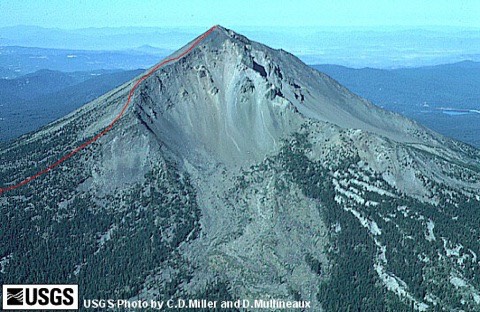Taming the beast - Interactive Storytelling an emerging form of interaction
Round about 25 designers, programmers, media theorists, managers and entrepreneurs gathered Phrontisterion V, the fifth annual conference on interactive storytelling, on June 26-27 2004 in the backyard of Chris Crawford’s home in the mountains near Jacksonville, Oregon, USA. In the midst of them moved, stood, performed, talked Chris Crawford, ringmaster and tamer. Two weeks after Phrontisterion V I try to resume the meaning of interactive storytelling for myself and for my further work.
Interactive Storytelling, as I have learned, will have a breakthrough within the next years as an emerging technology, as manifold story-worlds and as a novel form of human-computer-interaction, which will have an impact on other forms of interaction existing till now. The first interactive drama, façade, has been released this summer by Mateas & Stern, another release of the story-engine Erasmatron is announced for the next year by Chris Crawford, three books one interactive storytelling are published at the present time from Crawford, Glassner and Sheldon, two international conferences are established, which will alternate year by year, ICVS in Avignon, France, and TIDSE in Darmstadt, Germany.
I want to recall here problems and thoughts, which came to my mind during and after the conference in the common discussion and in talks with different members, especially with Jessica, Laura, Kathy and Chris, thinking about the future of interactive storytelling and about the possibilities to shape that development.
Developing interactive storytelling
As it seems now the development of the technology is a huge, complex enterprise, which cannot be done by single persons on a small scale. But there are creative people all over the world, writers, programmers, media theorists, actors and users, who are engaged in interactive storytelling. The process may accelerate, if the concept and the development of the technology is open for individual and organizational engagement within different realms, on different levels, of different scale and for different approaches, small scaled and big scaled according to capabilities and resources.
Using interactive storytelling
One crucial point is to understand how interactive storytelling is and will be related to everyday life. Interactive storytelling, as I have learned, is a necessary part of human information processing. By storytelling we transfer complex information. Stories are the fabric, by which individuals, organizations, communities understand structural changes in their life, cope with complex challenges and entertain themselves. Stories are means to under-stand the world of a community, the social bonds of that community and the activity within their environment. Stories emerge with that community, recall its birth, its changes and will die with that community or survive as tales for others. The breakthrough of the technology might depend on the understanding of the relation of interactive storytelling and life and thereby gaining recognition by the users.
Understanding interactive storytelling
At the present time we find an increasing intensive discussion between designers, programmers, media-theorists about the relation between the dramatic arc and interactivity . The Dramatic Arc is a means to perform and to understand an enfolding story in literature, theatre, films, which has been described and explained by Aristotle (Poetics, 350 B.C.E). The reader, viewer and the member of the audience are active agents in creating their own dramatic experience by interpreting the enfolding story. Their agency is limited to the imaginary reproduction of the dramatic arc, predefined by the author. Within interactive storytelling the member of the audience is an actor and the actors feeling of agency, the impact of the actor on the emerging story is decisive for her dramatic experience. To impose the dramatic arc on the activity of the actor would destroy her feeling of agency. In this context I can think of the dramatic arc only as an emerging necessary form of the individual activity of the actor in the context of the story-world. What might that be? Very rough, very short and certainly too general, the emerging form is the growing awareness of the actor of her own next step, she has to do for overcoming constraints of her own activity within the story-world till now, the growing need to do so and the growing trust, that this is the only right step for herself. This form of an individual activity cannot be predefined, but might be provoked, recognized and supported by a story-engine and a story-world. The question still remains, how the programmer of the technology and how the writer of the realm of possibilities to decide within the story-world are able to support this. Those contributions at Phrontisterion V, focused on this issue intrigued me most, from the likelihood of trivial and shallow stories to the dramatic situation of the actor, being torn between two possibilities, he has to decide.
I thank Chris and Kathy for the possibility to be their guest and to experience Crater Lake and Mount McLoughlin.

Chris’s Note: Barbara, a resident of sea-level Bremen, Germany, climbed Mt. McLoughlin, a volcano 9,500 feet high. Despite problems with the thin air, she fought her way up a very difficult climb and made it to the top. This slope was so steep that the scree (rocks and gravel) was at the angle of repose -- it would slide downward at the slightest perturbation. Thus, for every step upward you took, you could slide down two or three steps. Hence the need to move slowly and on all fours.
Mt McLoughlin (route in red):
References
Crawford, Chris (2004). Chris Crawford on Interactive Storytelling. Berkley, CA: New Riders Press (upcoming)Glassner, Andrew (2004). Interactive Storytelling: Techniques for 21st Century Fiction. Natick, MA: AK Peters, Ltd.Laurel, Brenda (1986) Towards the Design of a Computer-Based Interactive Fantasy System. Ph.D. Thesis, Ohio State University, Columbus, Ohio.Laurel, Brenda (1991). Computers as Theatre. Reading, MA: Addison-WesleyMurray, Janet (1998). Hamlet on the Holodeck. Cambridge, MA: MIT PressMateas, (2004) A Preliminary Poetics. http://www.electronicbookreview.com/v3/threads/threadtoc.jsp?thread=firstpersonSheldon, Lee (2004). Character Development and Storytelling for Games. Boston, MA: Course PTR.LinksFaçade http://www.quvu.net/interactivestory.net/ICVS http://www.virtualstorytelling.com/ICVS2001/TIDSE http://www.zgdv.de/TIDSE04/Tidse2004_text.html
